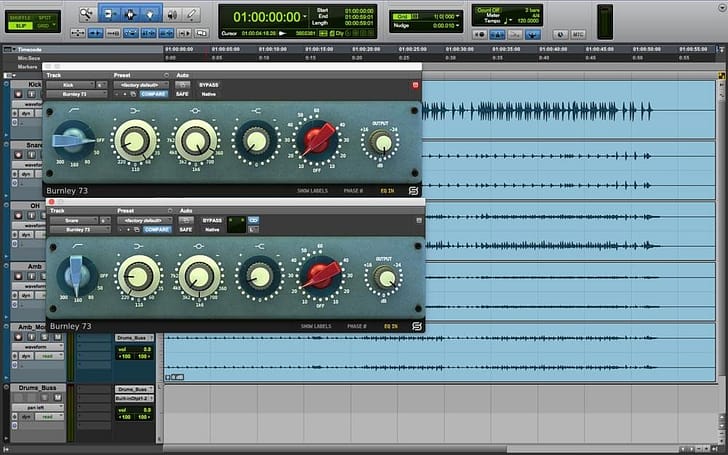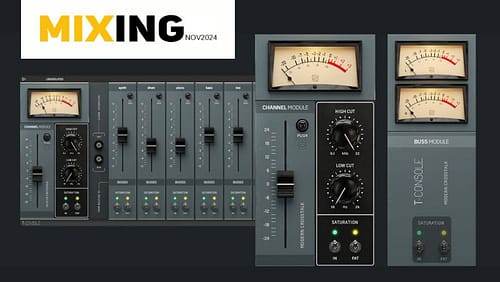The story behind Burnley 73
If you google the word Burnley, the first two results you might get are Burnley Football Club and the Wikipedia page about Burnley, a town in Lancashire, England, 21 miles North from Manchester and 20 miles East of Preston.
What might take you a bit more research to find out is that Burnley is also home to a renowned audio engineering company specialising in digital and analogue recording consoles – a company that designed one of the most iconic preamps in the history of audio: The 1073.
In the Summer of 1970, the first 24-channel desk was installed in London, at Wessex Sound Studios – complete with the new 1073 mic pre-amp and EQ channel input module. The first rock band to record on it was King Crimson, who made use of it for their controversial album Lizard.
To this day, the 1073 is one of the most desirable Class A mic preamps – and it was all because of its tone. Often described as “lush” and “textured”, the sound these preamps produced was thick and warm, with a mid-forward presence and a smooth top end. This larger-than-life sound owed its existence to the input and output transformers, which inject the signal with extra harmonics and subharmonics. Add to this an easy-to-use, musical-sounding equalizer section, and it’s no surprise that, over the last 50 years, the 1073 has become a favourite of countless professional sound engineers.
Inspired by that classic 1073 sound, Sonimus has devised the Burnley 73. In doing so, Sonimus has painstakingly recreated the characteristics of each original EQ bands, as well as the unique personality of both the line and microphone inputs. Personally, I find Burnley remarkably easy to use and generate a professional, sweet sound. The Burnley 73 delivers the warmth, openness, and analog sound of the 1073, right in your DAW with some extra operational features.

I was delighted with the saturation section of the Burnley 73. In my experience, other emulations of the 1073 have a tendency to sound too aggressive, especially in the microphone input mode, making that feature almost unusable in most scenarios. But the Burnley gives more control over its input knob, allowing you to take it all the way from subtle saturation, instilling more presence, to overdrive, bring the edge – ideal for parallel processing. This together with its output section provides complete control over your gain staging.
The equalizer section of the Burnley 73, just like the original unit, presents a high-pass filter and 3 bands with selectable fixed frequencies for low, mids, and highs. Another feature that I find useful is the ability to disengage individually each of these bands, making it very easy to A/B the effect of that specific band over the sound of your track and/or reducing the processing load of the plugin (already low in default mode).
The Burnley 73 is phenomenal on vocals, drums, guitars, or even to inject some life into any virtual instruments in your productions. You can hear how I made these drums more present and punchy by adding the Burnley only on the Kick and Snare.
- Unprocessed Drums
- Drums with Burnley 73 on Kick and Snare:
As mentioned in previous reviews, the Burnley 73 is a great addition to your arsenal of plugins, delivering the same classic vibe and sound of the iconic 1073, without breaking the bank. A must-have for the modern-day audio engineer.
Did you know the story behind the name of the Burnley 73? How do you use it in your mixes? Do you like it on a particular sound source? Or perhaps to spice up your mix buss? Let us know in the comment section and make sure to check our blog and social media for future tips and tutorials on how to use the Sonimus Burnley 73 in your mixes.







Muy buen artículo, en lo personal ocupo mucho burnley 73 en el canal de voz principal, para darle ese color que tanto me gusta!. Es una herramienta profesional y además económica, la recomiendo totalmente, he probado otros pero estoy totalmente aferrado al burnley 73! Gran trabajo Sonimus! Gracias.